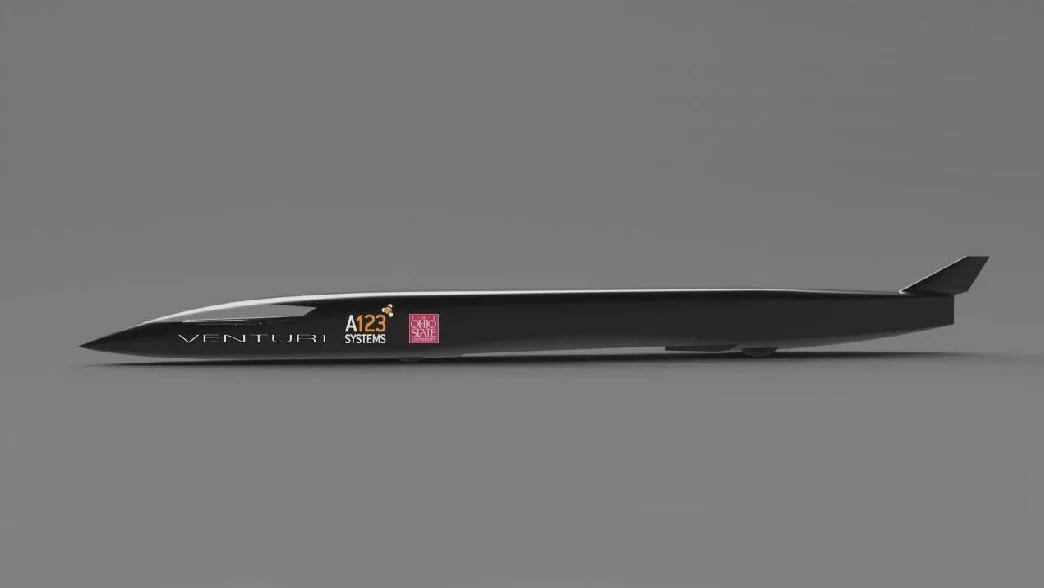Work to design a new version of the Buckeye Bullet capable of speeds in excess of 400 mph has begun. The Ohio State University team has revealed that Version 3 is to be an entirely new battery electric vehicle featuring an optimized body and fin shape based on aerodynamic simulations undertaken at the Ohio Supercomputer Center. Other drag-reduction tweaks - such as driver position and the strategic addition of wind deflectors - are currently being considered, ahead of construction and testing during the next academic year.
In 2004, the nickel-metal hydride battery-powered original version of the Buckeye Bullet zoomed its way into the record books at the Bonneville Salt Flats in Wendover, Utah by setting the U.S. electric land speed record at just over 314 mph (over 500 kph). Hydrogen fuel cells were used in Version 2, which went on to set the international land speed record for its class at 304 mph (489 kph). The team wasn't satisfied, and ripped out the fuel cells, replaced them with Li-ion batteries and powered up to 307.7 mph (495 kph) to set a new world record with Version 2.5 last August.
Now the team of engineering students at Ohio State University's (OSU) Center for Automotive Research has set its sights on achieving over 400 mph (643 kph) with Version 3. It's to be an entirely new vehicle from the ground up, and the first step in the design process was to take a close look at vehicle aerodynamics.

The Ohio Supercomputer Center has supported the project from the start by providing computational resources and technical assistance, and the engineering team has been running aerodynamic simulations using computational fluid dynamics (CFD) with predominantly open source software on the Center's flagship IBM 1350 Opteron Cluster.
"The simulations are needed to accurately predict the aerodynamic forces on the vehicle at these speeds and can only be run on large computing clusters," says the project's chief engineer Cary Bork. "Various mesh sizes have been used from 1 million to 50 million cells. Most of the simulations use 25 million cells."
The simulations have resulted in a new lean, streamlined design for Version 3 - where the driver has been moved forward of the front tires to improve volume utilization, reduce overall vehicle length, decrease the vehicle drag and improve the vehicle balance. The students are also looking into adding wind deflectors beneath the vehicle and in front of the tires to try and cut down on the amount of air entering the wheel well, and testing the effectiveness of new air-brake equipment.
Steering towards a goal of achieving speeds over 400 mph "places the team in direct competition with many of the fastest internal combustion cars in the world," said Bork. "What sets the new design apart from the previous Buckeye Bullet vehicles is that at these higher speeds it is possible to produce shock waves under the vehicle. Such shock waves under the vehicle negatively affect the vehicle drag and can produce lift. Lift is undesirable in this application. Minimizing or eliminating these shock waves is critical to ensuring the safety and stability of the vehicle."
OSU's engineering team has once again partnered with Venturi Automobiles and A123 Systems, and will also take advantage of the technical experience of CFD designers TotalSim LLC, for the development of Buckeye Bullet 3. Design work is scheduled to be completed by the end of the (northern) summer, with construction and testing to be undertaken over the next academic year - ahead of a Fall return to the Bonneville Speedway.







